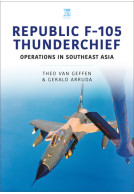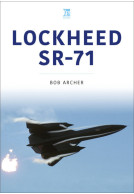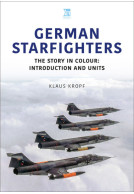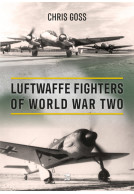Avro Vulcan B.Mk2: A Place in History, 1960–84 (Paperback)
Imprint: Key Publishing
Series: Historic Military Aircraft
Pages: 96
Illustrations: Over 100, colour and black and white
ISBN: 9781802822687
Published: 25th August 2023
(click here for international delivery rates)
Order within the next 4 hours, 52 minutes to get your order processed the next working day!
Need a currency converter? Check XE.com for live rates
In 1955, the Vulcan B.Mk2 was proposed and a new wing modification was designed to take advantage of the more powerful Olympus engines and a new stand-off missile known as Blue Steel. The new wing was known as the Phase 2C development. Avro were given a contract for an aerodynamic prototype on 10 July 1956, with the first prototype VX777 making its first flight with the new wing on 31 August 1957. This led to a number of significant changes to the B.Mk2 electrical systems, flying controls and structure. The Avro Vulcan was originally designed as a high-altitude medium bomber, but the operating requirement changed when it was required to fly at a low level. Thanks to the Vulcan's inherently low aspect wing and structure, it proved more suitable to this role than the high aspect wings of the Vickers Valliant and Handley Page Victor. This fully illustrated volume looks at the development and history of the Vulcan B Mk2.
I have been really looking forward to reviewing this book as my father worked on the initial design f the Vulcan. I am pleased to say that I was not disappointed.
The Society of Model and Experimental Engineers
To me the period from 1960 to 1984 is the most fascinating from an operational point of view. It begins with the move to carrying the country’s nuclear deterrent, Blue Steel, the many hours spent on Quick Reaction Alert (QRA), followed by the transition to low level attack and of course its final missions during the Falklands War just as the aircraft was due to retire.
The book begins with pages on the improvements made to the aircraft for its new role along with interesting drawings and paragraphs on the changes. There are lots of photographs showing the production line and this iconic aircraft in flight.
Blue Steels development is covered along with how it was utilised. There is a fascinating section on QRA and the requirements that aircraft were expected to be rolling within 30 seconds from an inert start. On exercise getting four aircraft scrambled within 90 seconds was common! A recognition of the Cold War and what it meant. By comparison troops in Germany were expected to be in there combat positions within 4 hours of receiving an alert.
In conclusion the book packs a great deal into its 96 pages.
About David W. Fildes
Historian David W Fildes is an award-winning graphic designer and illustrator. After serving several years in the advertising industry he joined at Hawker Siddeley Aviation in 1972, working at both the Chadderton and Woodford factories previously known as A.V. Roe & Co Ltd. (Avro). In 1995, he was tasked to set up a Heritage Centre at BAE Systems Woodford, which is going from strength to strength. Now known as the Avro Heritage Museum, it records the many achievements of A.V. Roe & Co Ltd. and successor companies. He is a keen enthusiast of Avro and the iconic Vulcan, which he continues to research.























